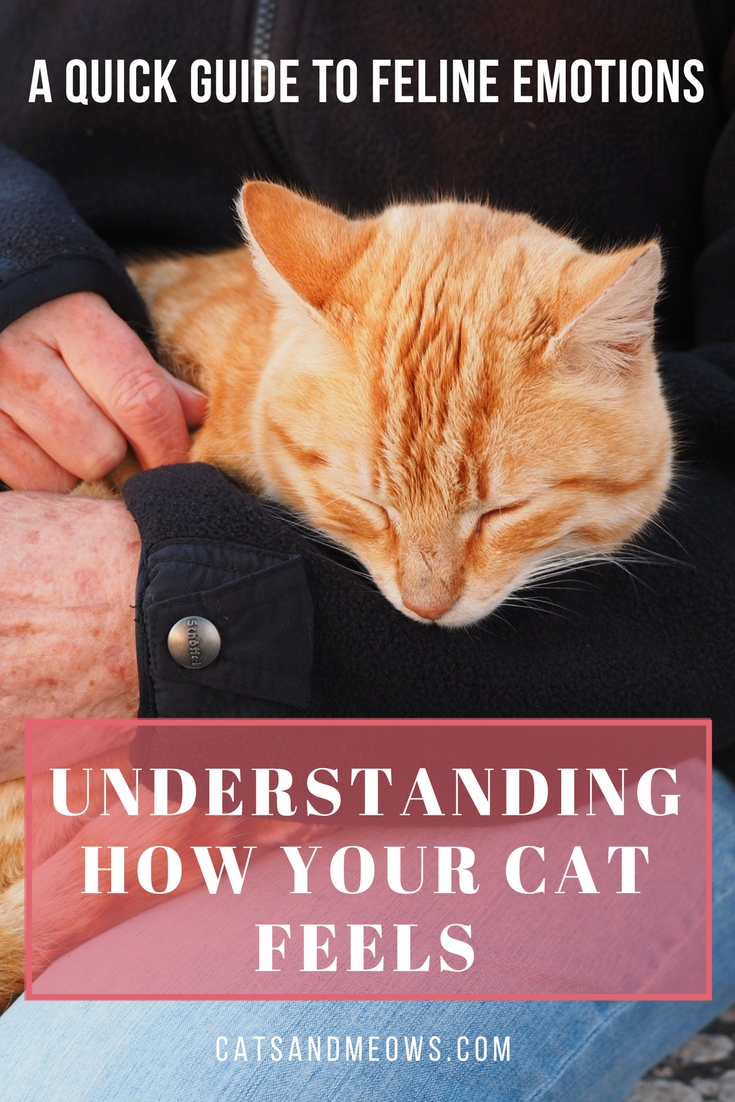Understanding How Your Cat Feels: A Quick Guide To Feline Emotions
 Sometimes, we find ourselves wondering about our cat feels. For instance, you might worry that a suddenly distant cat has something wrong with him, or that your aggressive cat is somehow unhappy.
Sometimes, we find ourselves wondering about our cat feels. For instance, you might worry that a suddenly distant cat has something wrong with him, or that your aggressive cat is somehow unhappy.
Related: Should Your Cats Sleep With You?
Cats, just like humans, have a wide range of emotions, from happy and sad, to relieved and frustrated. The key to maintaining a great relationship with your cat is learning how you can recognize these emotions through their behavior.
Knowing When your Cat is Happy
It’s often easy to tell when your cat is happy. When he’s sitting, he’ll be relaxed and upright, with ears pointed up and forward. They might tuck their paws underneath them when lying down, or they might stretch out, which shows they’re extra happy. If you stroke your cat, they might close their eyes and start to purr gently.
Knowing When your Cat is Anxious
Kitties can be very sensitive to change, and unexpected changes can make them anxious. If you can read the symptoms of a nervous cat, you can help to encourage him or her back into a more relaxed state. If your cat’s anxious, their pupils might be dilated, their head might lower, and their whiskers could pull back. As anxiety increases, they might arch their back, or cower. If your cat’s tail is moving from side to side at the tip, this is a sure sign of anxiety, so offer some reassurance.
Knowing When your Cat is Scared
While anxious behavior in a cat can be subtle, when your cat is afraid, they’re not shy about letting you know. Usually, when a cat’s afraid, his or her ears flatten against their head, and they may either run away, or crouch down and remain very still. Usually, their eyes will be open wide, and they may hiss at close threats, growl, or strike out with their claws. Some cats will straighten the front legs to appear taller, or arch their backs and fluff up their fur so that they look bigger.
Knowing When your Cat is Angry
If your cat is acting angrily, then it’s important to tread carefully. You should always avoid provoking an angry cat. Don’t shout at them, or make any sudden movements. An angry cat is usually rigid, with their tail held out stiff and straight. They might be silent, spitting, growling, or hissing. Often, angry cats will attempt to look large and threatening, by puffing out their fur, and their eyes will be narrow and focused.
Affiliate links included below. Thanks for your support!
Knowing When your Cat is Frustrated
Cats can get frustrated just like humans. Usually, when your kitty is frustrated, he or she will focus all their attention on getting what they want. Their senses will be tuned to their goal, and they may pace impatiently if they struggle to get what they want. Cats struggle to maintain their frustration forever, so if they can’t get what they want, they’ll enter other moods, like anger, or even depression.
Share your thoughts in the Comments section below, on our Facebook Page, Follow Our Twitter Account or Head Over To Our Pinterest Page!

[…] Related: Understanding How Your Cat Feels: A Quick Guide To Feline Emotions […]
[…] Related: Understanding How Your Cat Feels: A Quick Guide To Feline Emotions […]